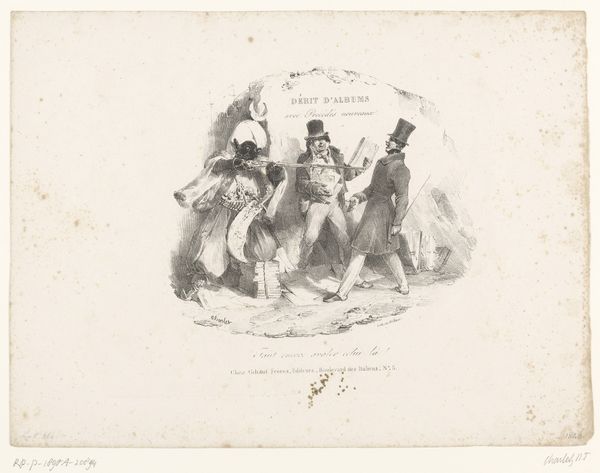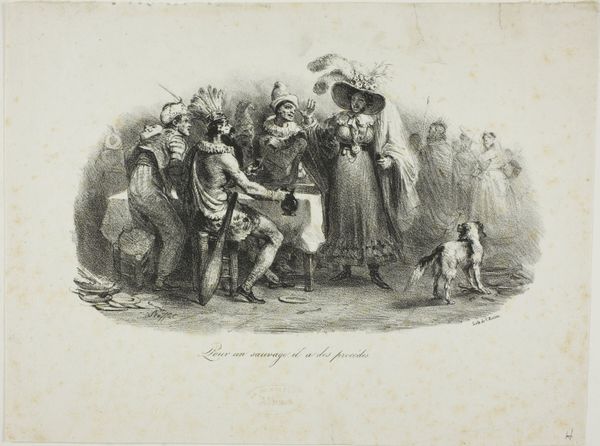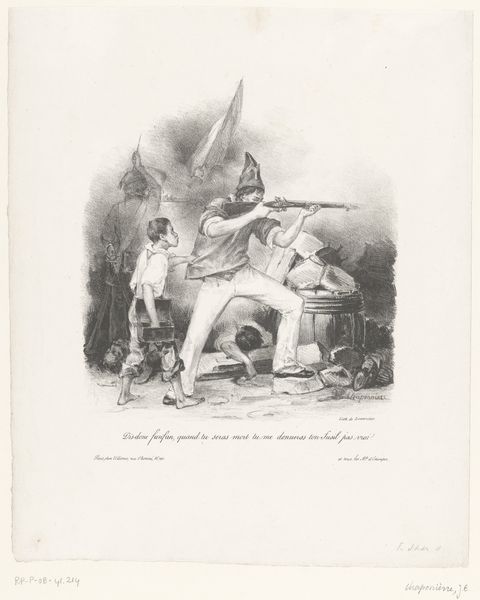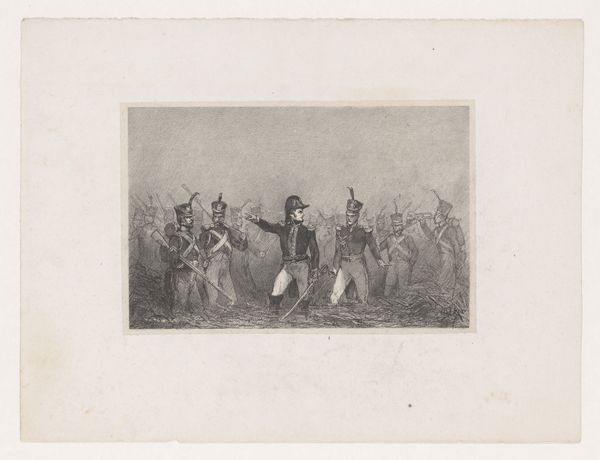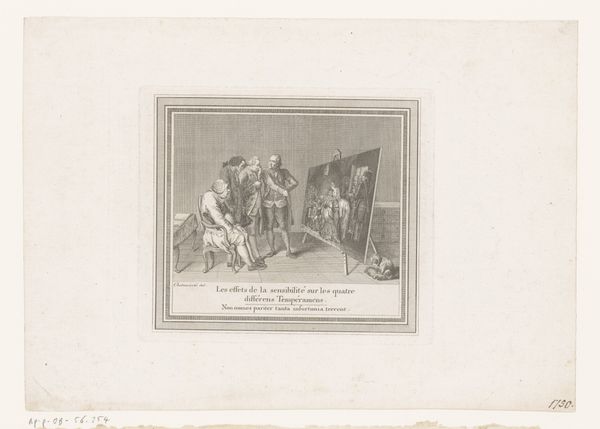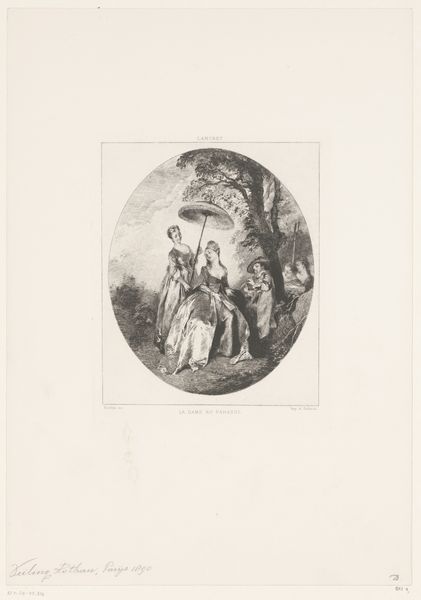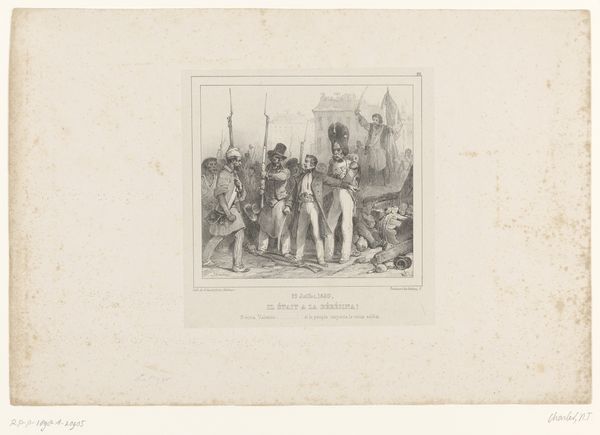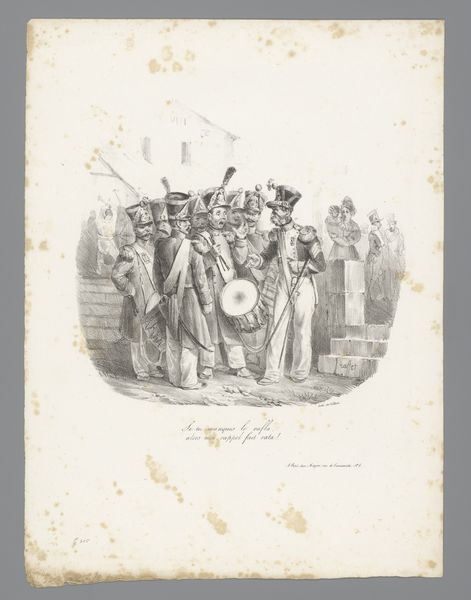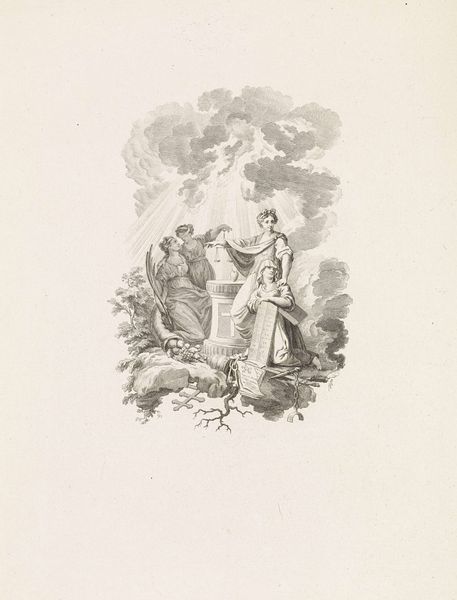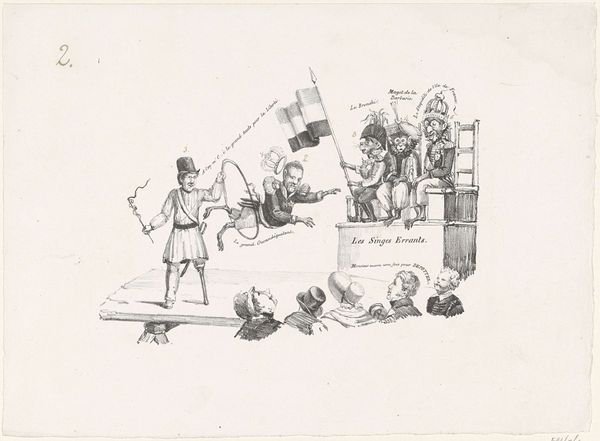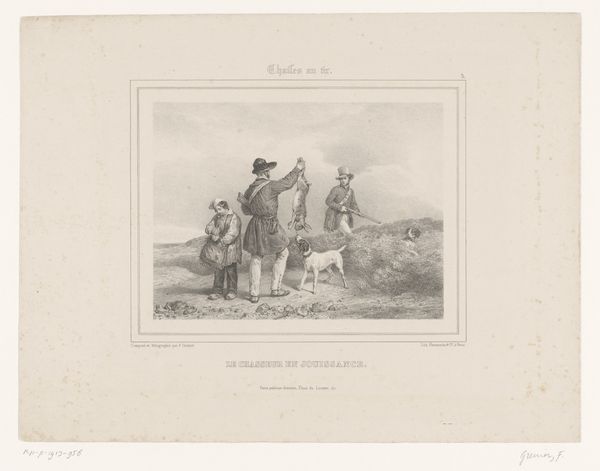
Design for an Emblem of the State of South Carolina c. 1860
0:00
0:00
drawing, print, pencil, engraving
#
drawing
# print
#
pencil sketch
#
pencil drawing
#
pencil
#
history-painting
#
academic-art
#
engraving
Dimensions: sheet: 23.18 × 33.97 cm (9 1/8 × 13 3/8 in.)
Copyright: National Gallery of Art: CC0 1.0
Curator: Immediately striking, isn’t it? There's a rather stark contrast in the classical elements with the minuteman. Editor: Indeed. This pencil and engraving composition is "Design for an Emblem of the State of South Carolina," conceived around 1860 by Christian Schussele. It provides insight into how South Carolinians wished to visually represent their state, especially on the eve of the Civil War. Curator: It’s interesting how it positions itself within the academic art style of the period, yet the choice of symbols is where the real story unfolds. We see what appears to be a palmetto tree referencing their victory against the British. What else catches your eye from an iconographic viewpoint? Editor: I'm drawn to the figure of the woman on the left. Her attire suggests classical antiquity, which at the time would have implied a sense of wisdom, but holding a staff topped with what looks like a bird's head hints to the region’s natural abundance or perhaps its desire to project an image of bountiful resources. Curator: And notice how she is juxtaposed with a revolutionary war solider. I wonder if it meant to give an allusion to two periods of conflict? It also subtly asserts South Carolina's martial pride, particularly when we view the inclusion of the canon in the bottom right corner. Editor: Precisely. This piece seems steeped in the visual rhetoric prevalent in the antebellum South, aiming to cultivate an image of both strength and historical significance, especially to rally its supporters and establish its distinct identity in the face of looming national strife. It really attempts to weave both historical struggle with an assertion of strength. Curator: Absolutely, and when exhibited and reproduced, this emblem serves to validate the socio-political structures. It certainly offers insights into the ideological underpinnings motivating them at that time. Editor: Analyzing these emblems and flags becomes very powerful in revealing the visual languages used during moments of political identity formation. Curator: I agree. Thinking about Schussele’s other historical painting work really reframes what identity building looks like. Editor: It has provided some perspective on the period's complexities. I'll definitely keep that in mind for the next viewing.
Comments
No comments
Be the first to comment and join the conversation on the ultimate creative platform.
